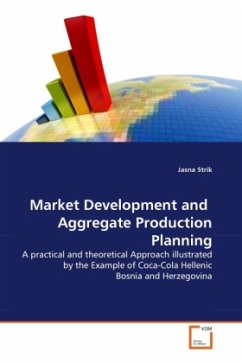
The Impact of Aggregate Forecasting on Strategic Investment and Growth
Based on an example of a leading printed wiring board manufacturer in the electronic industry
Versandkostenfrei!
Versandfertig in 6-10 Tagen
32,99 €
inkl. MwSt.

PAYBACK Punkte
16 °P sammeln!
The forecast of demand forms the basis for allstrategic and planning decisions in a supply chain.Throughout the supply chain, all push processes areperformed in anticipation of customer demand whereasall pull processes are performed in response tocustomer demand. For push processes, a manager mustplan the level of production. For pull processes, amanager must plan the level of available capacity andinventory. In both instances, the first step amanager must take is to forecast what customer demandwill be. For example: Dell orders PC componentsin anticipation of customer orders, whereas itperfor...
The forecast of demand forms the basis for all
strategic and planning decisions in a supply chain.
Throughout the supply chain, all push processes are
performed in anticipation of customer demand whereas
all pull processes are performed in response to
customer demand. For push processes, a manager must
plan the level of production. For pull processes, a
manager must plan the level of available capacity and
inventory. In both instances, the first step a
manager must take is to forecast what customer demand
will be. For example: Dell orders PC components
in anticipation of customer orders, whereas it
performs assembly in response to a customer orders.
To determine the amount of components to have on hand
(a push process) and to determine the capacity needed
in its plants (for pull production). Dell requires a
forecast of future demand. Forecasts are also needed
further up the
supply chain.
strategic and planning decisions in a supply chain.
Throughout the supply chain, all push processes are
performed in anticipation of customer demand whereas
all pull processes are performed in response to
customer demand. For push processes, a manager must
plan the level of production. For pull processes, a
manager must plan the level of available capacity and
inventory. In both instances, the first step a
manager must take is to forecast what customer demand
will be. For example: Dell orders PC components
in anticipation of customer orders, whereas it
performs assembly in response to a customer orders.
To determine the amount of components to have on hand
(a push process) and to determine the capacity needed
in its plants (for pull production). Dell requires a
forecast of future demand. Forecasts are also needed
further up the
supply chain.












